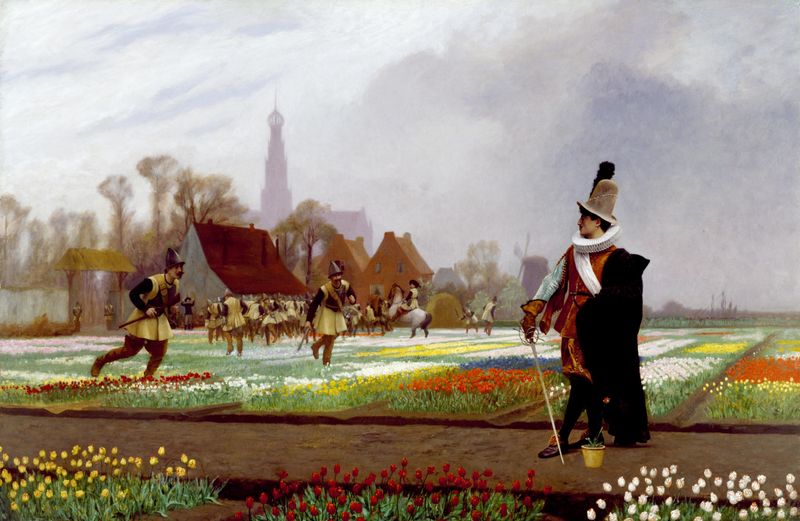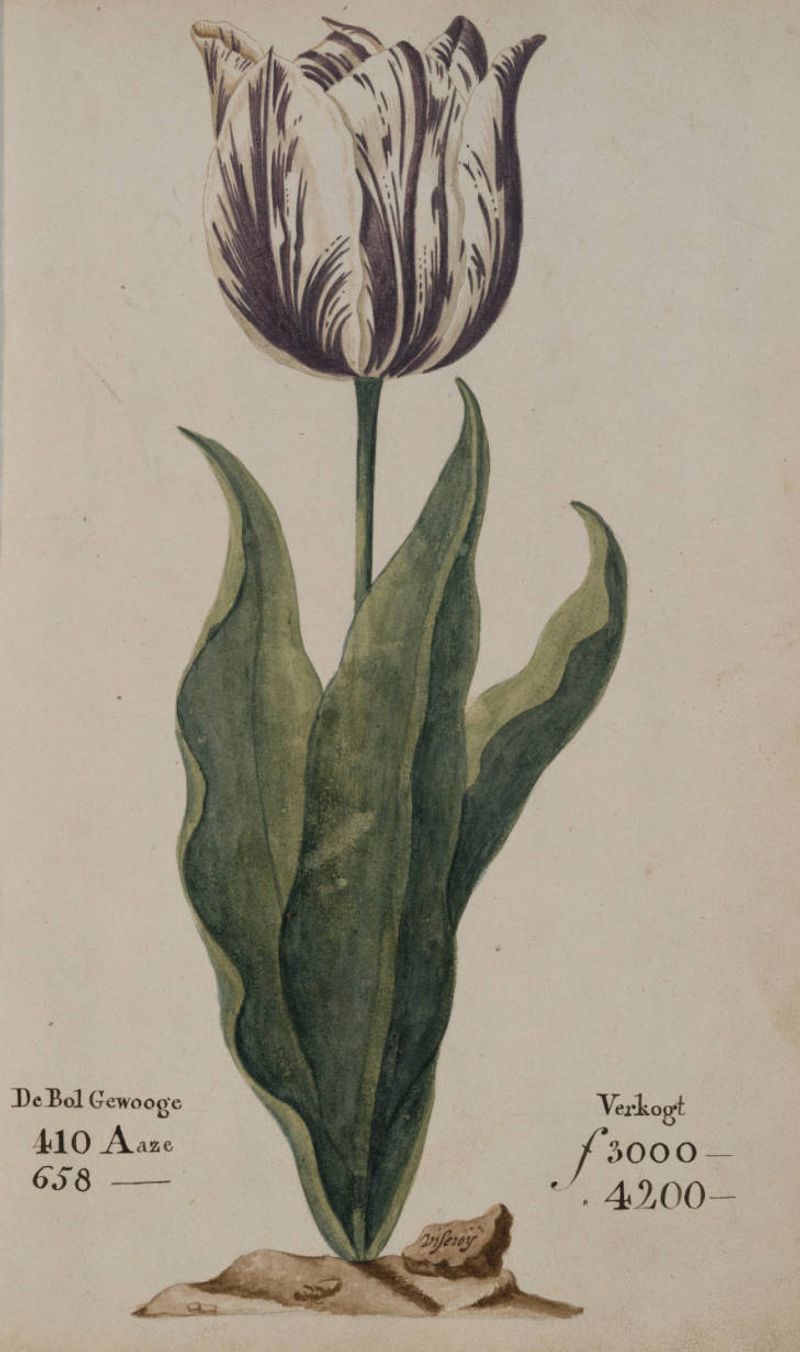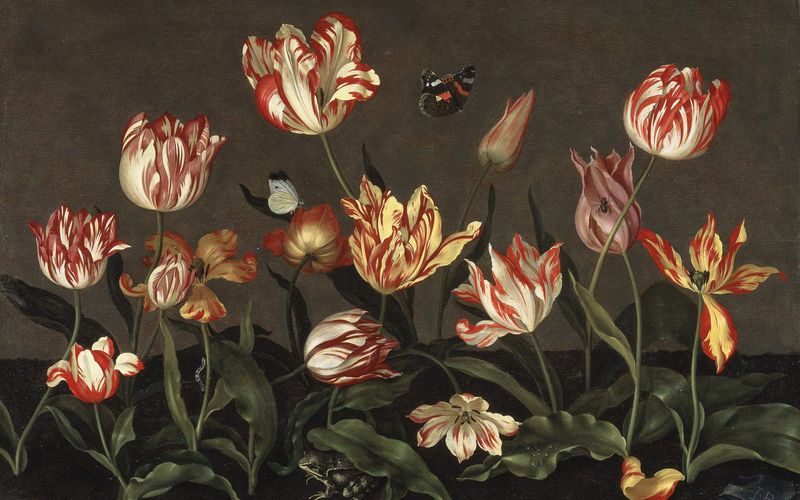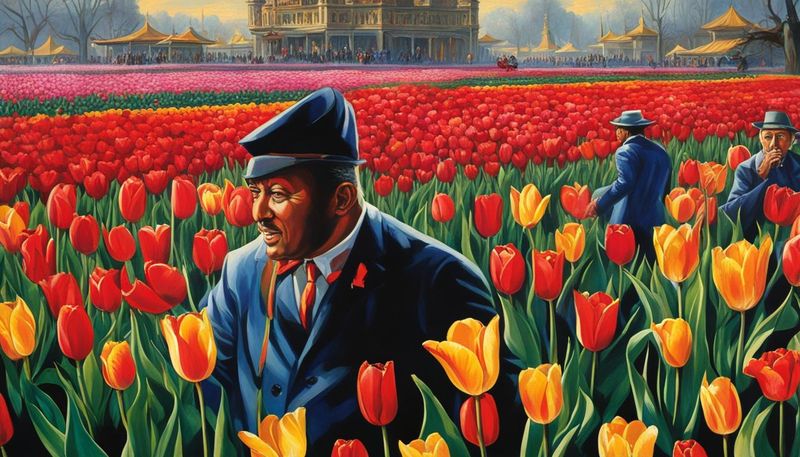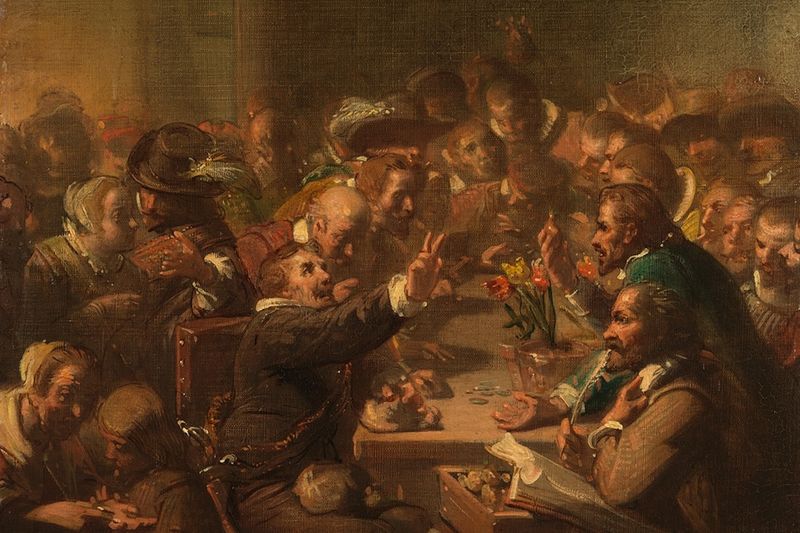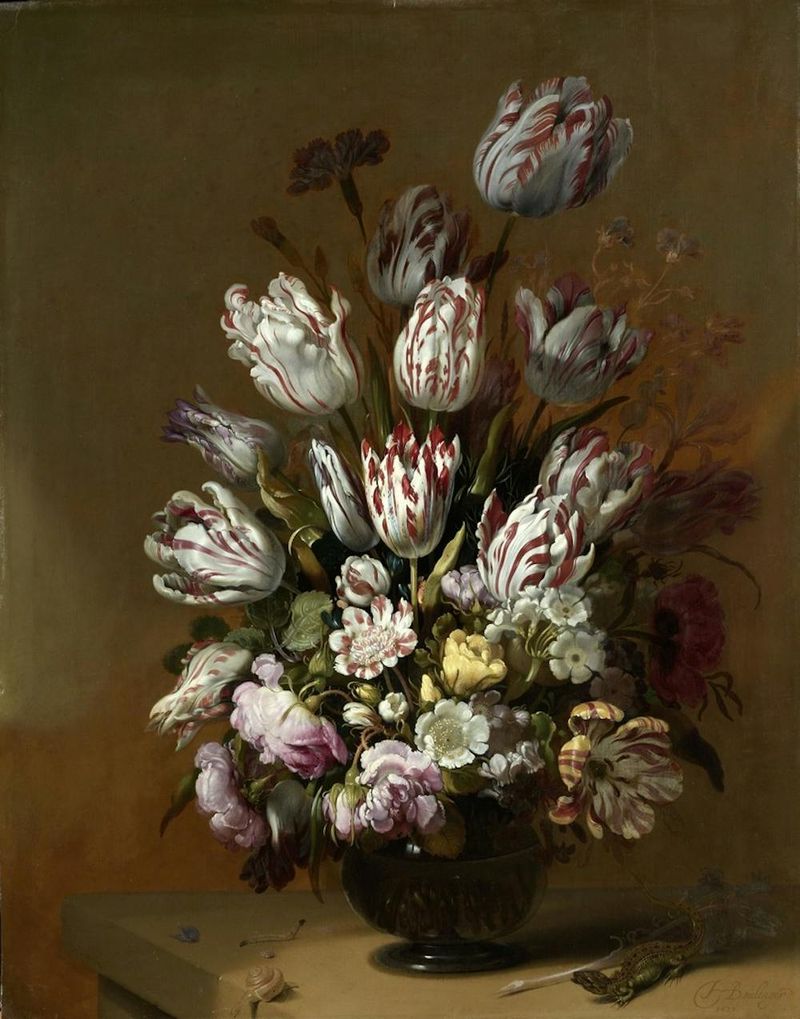Tulip Mania in the 1600s was a period where the value of tulip bulbs surged to extraordinary heights in the Dutch Republic. This historical economic event is remembered as one of the first recorded speculative bubbles.
The fascination and frenzy surrounding tulips captured the imaginations of people across Europe, leading to astonishing tales of wealth and loss.
This blog post explores twelve surprising facts about Tulip Mania, shedding light on its causes, effects, and the lessons it holds for modern economies. You’ll discover the unique allure of tulips and the dramatic events that unfolded during this incredible time.
1. The Tulip’s Exotic Origin
Tulips, native to Central Asia, were first brought to Europe in the 16th century. These exotic flowers caught the eye of botanists and wealthy individuals due to their vibrant colors and unique shape. Initially, tulips were considered a luxury item, decorating the gardens of the elite. Their charm and rarity contributed to their high value. The first tulip bulbs introduced in the Netherlands were particularly prized, leading to the cultivation of unique varieties. This fascination laid the foundation for the later mania that would see prices skyrocket to astronomical heights.
2. The Birth of a Bubble
Tulip Mania’s bubble began with the growing interest in tulip trading. As demand increased, the prices of tulip bulbs soared, attracting both enthusiasts and speculators. People began trading tulips like stocks, anticipating profits. This speculative trading marked the birth of the bubble. Bulbs were sold and bought on paper without ever seeing the actual flower. As more people joined the frenzy, the bubble expanded beyond control. The increasing disconnect between the tulip’s intrinsic value and its market price set the stage for the dramatic burst.
3. Unprecedented Prices
During the height of Tulip Mania, some tulip bulbs sold for prices equivalent to modern-day mansions. This was a time when a single bulb could be traded for goods such as land, livestock, or even homes. The allure of quick wealth drove people from various walks of life to invest heavily in tulips. This phase saw unprecedented price spikes, making headlines across Europe. However, the unsustainable nature of such valuations eventually led to a dramatic decline. This phenomenon serves as a cautionary tale about the dangers of speculative investing.
4. The Role of Speculation
Speculation played a crucial role in Tulip Mania’s escalation. Many investors were driven by the fear of missing out and the desire for quick profits. Speculators often bought tulips at high prices, hoping to sell them even higher. This led to a self-perpetuating cycle, as soaring prices attracted more participants. The speculative nature of these trades fueled the mania, disconnecting the tulip’s price from its actual worth. Eventually, this speculative bubble expanded beyond sustainable limits, setting the stage for its inevitable burst. Understanding this aspect highlights the risks of unchecked market exuberance.
5. The Collapse
The collapse of Tulip Mania was swift and devastating. As fears of overvaluation grew, confidence waned, leading to a sudden drop in demand. Prices plummeted rapidly, leaving many investors in financial ruin. The once sought-after tulips became nearly worthless overnight. This collapse highlighted the volatility and unpredictability of speculative bubbles. Many who had invested heavily in tulips faced bankruptcy, and the economy experienced significant turmoil. The aftermath of this financial disaster serves as a reminder of the potential consequences of speculative excess.
6. Legal Repercussions
In the wake of Tulip Mania’s collapse, legal battles ensued. Many contracts for tulip sales were left unfulfilled, leading to disputes and court cases. The Dutch government intervened, offering settlements to ease the economic fallout. These legal repercussions underscored the need for clearer regulations in speculative markets. The aftermath saw a push for transparency and accountability in trading practices. This period’s legal challenges provided lessons for future financial regulations, emphasizing the importance of safeguarding the economy against speculative excesses. The legal proceedings further illustrated the widespread impact of the mania.
7. Tulips as a Status Symbol
During Tulip Mania, owning rare tulip bulbs became a status symbol. The elite class showcased their wealth by cultivating extravagant tulip gardens. This trend fueled the demand for unique and rare tulip varieties. Tulips became a symbol of prestige and social standing, connecting horticulture with high society. The obsession with tulips permeated cultural and social spheres, influencing art and literature. This status-driven demand contributed significantly to the rise in tulip prices. The cultural impact of tulips during this period highlights the intersection of economics and societal values.
8. The Cultural Impact
Tulip Mania’s influence extended to art and culture. Artists captured the beauty and allure of tulips in paintings, contributing to their mythos. Tulips appeared in various art forms, symbolizing beauty and transience. Poets and writers also drew inspiration from the mania, exploring themes of greed and vanity. This cultural fascination with tulips extended beyond the economic sphere, leaving a lasting imprint on Dutch society. The artistic representations of tulips from this period remain iconic, reflecting the era’s unique blend of commerce and creativity. This cultural impact endures in the Netherlands’ artistic heritage.
9. The Impact on Modern Economics
The lessons from Tulip Mania continue to resonate in modern economics. The event is often cited as a classic example of a financial bubble, used in academic studies and economic theories. It illustrates the dynamics of speculative bubbles and the importance of market regulation. Economists draw parallels between Tulip Mania and contemporary market phenomena, offering insights into investor behavior and market psychology. This historical event underscores the need for vigilance in preventing similar occurrences. The persistent relevance of Tulip Mania in economic discourse highlights its enduring significance as a cautionary tale.
10. The Myth of the Ruined Economy
Despite the dramatic collapse of Tulip Mania, the broader Dutch economy remained resilient. While many individuals faced financial ruin, the overall economic impact was less catastrophic than often portrayed. The agriculture and trade sectors continued to thrive, stabilizing the economy. This resilience challenges the myth that Tulip Mania devastated the entire economy. The recovery process demonstrated the Dutch Republic’s economic strength and adaptability. Understanding this aspect provides a more nuanced perspective on the event, revealing the complexities of economic resilience. The myth of a completely ruined economy is often exaggerated in popular retellings.
11. Tulips Today
Today, tulips remain a beloved symbol of the Netherlands. They are celebrated in festivals and continue to be a major export product. The enduring popularity of tulips reflects their deep cultural and historical roots. While the frenzy of Tulip Mania has passed, the flower’s legacy endures. Modern horticulture has furthered the development of diverse and vibrant tulip varieties. The Netherlands embraces this floral heritage, with tulips symbolizing beauty, resilience, and history. Tulip festivals attract visitors worldwide, celebrating the flower’s unique charm and its role in Dutch culture. The legacy of Tulip Mania continues to enchant and inspire.
12. Learning from History
Tulip Mania offers valuable lessons for today’s investors and economists. It highlights the importance of understanding market fundamentals and the dangers of speculative bubbles. History serves as a guide, warning against irrational exuberance and unchecked speculation. Educators use Tulip Mania as a case study to teach economic principles and the complexities of market dynamics. This historical event encourages critical thinking and informed decision-making. Learning from past mistakes helps build a more stable and resilient economic future. The enduring relevance of Tulip Mania’s lessons underscores the importance of historical awareness in navigating modern financial landscapes.


